12 Types of Shower Heads & Mounting Designs
Author: Omar Alonso | Editor: Omar Alonso
Review & Research: Jen Worst & Chris Miller
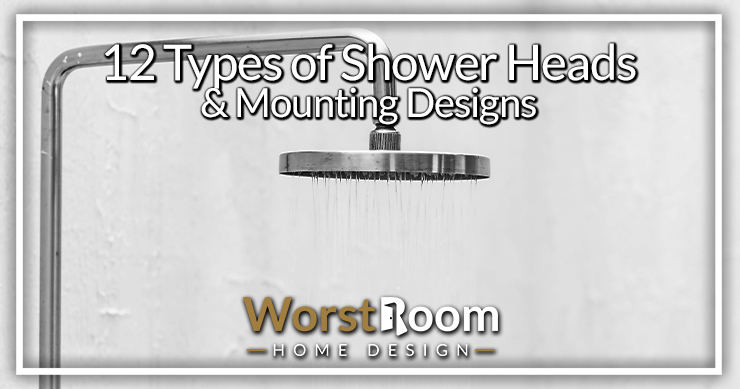
Are you looking for a new shower head? Most of us aren't the same during the day if we don't get our shower in the morning. Or if you don't get your evening shower, it might ruin your sleep quality. Why not think about upgrading to different types of shower heads to improve the experience?
This post unpacks the various shower head options out there. We look at the design and performance of each model to help you make the right decision on the best shower head for your application.
3 Shower Head Mounting Designs
Though most of these mounting configurations will accommodate any shower head styles mentioned below due to the standardization of the threading and shower pipe sizes, you'll want to stop and make sure you'll have room to use each type and to achieve your end goal.
Wall-Mounted Shower Heads
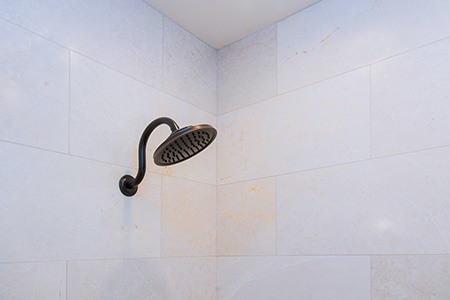
This model is the most common shower head mount installed in residential plumbing systems. It projects from the wall above the shower faucet. And since the large majority of shower heads are universal, you can swap them out easily and quickly this way.
Bar Mounted Shower Heads
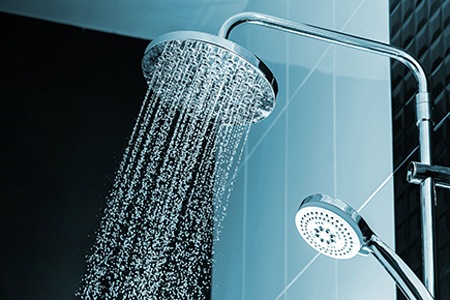
The bar mount attaches to the wall but has a higher mounting position than the wall-mount design. It's great for installing rain-style shower heads because you have a different distance from the shower head to your head.
Ceiling Mounted Shower Heads
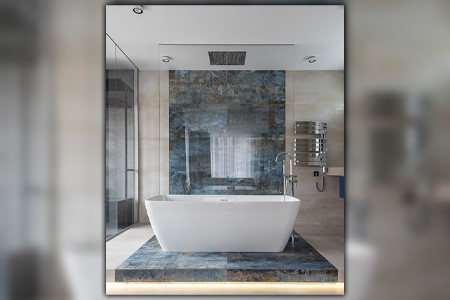
This mounting style comes from the ceiling. You get more versatility and height for different shower head models. However, it's the least common mounting design.
9 Types of Shower Head Designs
Now we're on to the shower head types, meaning the actual device that the water flows out of. You will come to understand why they are categorized the way they are and which features each one comes with.
Fixed Standard Shower Head
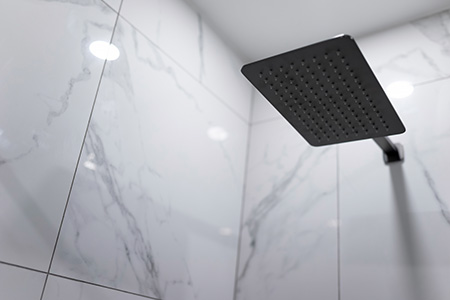
Pros
- The most typical shower head installation
- Simple to install
- Plenty of design options
- Installed at the average shower head height
Cons
- Not adjustable
When you think of a shower head, you're probably imagining the standard shower head design found in most homes across the United States. Depending on the fitment, this design might use a shower arm. The head usually doesn't have adjustable spray settings, but you can move the joint to change its direction up and down and side to side.
Residential bathrooms are usually set up with a standard shower head fitting. They offer easy replacement with an upgraded model. Just unscrew it from the fitting and replace it with a different model. It's the most affordable model, and you get designs with varying stream settings, but they usually don't offer variable settings like pulse, etc.
Dual Shower Heads
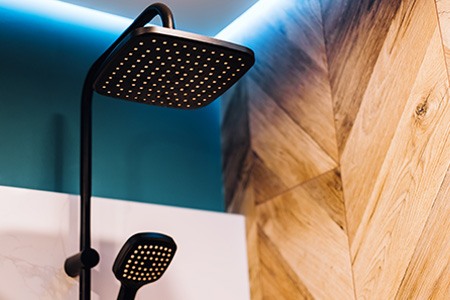
Pros
- A good choice for seated showering positions
- Versatile shower head application and spray area
Cons
- Expensive compared to standard models
The dual shower head has a design with a fixed head and a handheld shower incorporated into the same model. You get the handheld design's versatility and the fixed head's stability. Some dual shower heads allow the use of the fixed and handheld simultaneously.
These types of shower heads are ideal for people with mobility issues who need to shower in a seated position. It's more expensive than a standard shower head since it offers two heads in one design.
Massaging Shower Heads
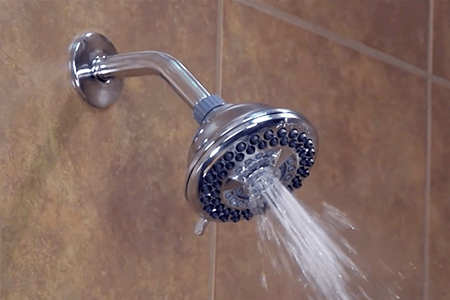
Pros
- Multiple spray settings
- Several head designs
Cons
- Less water efficiency
The massage shower head gives you a premium shower experience and comes with a hefty price tag for this model. These shower heads feature specialty settings allowing you to choose from different modes to change the shower experience. They feature handheld and fixed designs and plenty of options for massage settings.
They deliver an adjustable stream that pulses the water at different pressures, providing the sensation of a jet massage effect. The spa experience offered by the massaging shower head makes it a highly sought-after model. The massaging shower head is a great therapeutic choice for these issues if you deal with a high-stress job or are prone to developing knots in your back and neck.
Filtering Shower Heads
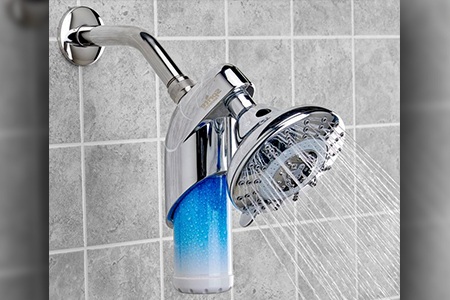
Pros
- Change hard water to soft water
- Filters out minerals that dry skin
- Filters out contaminants
Cons
- You'll need to replace the filter
A filtered shower head is great for use in regions with hard water supplies. Showering in hard water isn't good for your skin as it can dry it out. The extra minerals in the water give it high alkalinity, and it dries out your hair as well. Additional minerals in the water eventually clog the jets in the shower head, reducing its performance.
A filter shower head resolves this problem. It removes the minerals from the water, filtering them out before pushing out softer water through the shower head jets. This model comes in several designs, including fixed and handheld and dual, massaging, and rain models. Among all the different shower heads, a filter is unique to these types thus far.
The only issue is that you'll need to change the filter every few months, depending on the extent of the hard water in your area. Most models don't have indicators to tell you when to change them, so managing them is challenging. They're also fairly expensive, and the filters might be challenging to find when you need a replacement.
Low-Flow Shower Heads
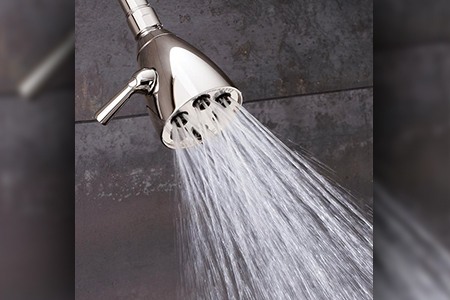
Pros
- Great for reducing water waste and improving shower efficiency
- Ideal for locations with minimal water resources
Cons
- One setting only
- A less refreshing shower experience
If you live in an area of the United States, such as California, where water is scarce, you can do your part for the environment by using a low-pressure shower head. These models limit the flow of water through the shower head. As a result, you get less of a powerful, refreshing shower experience.
You save on water with this model, but you'll sacrifice the power-shower effect that many people love with their shower. Some people go the opposite direction and even learn how to remove the shower head's flow restrictor so they get an even larger volume of water spraying out.
The low-pressure shower head comes in different pressures, with each model having a "GPM" or "gallons per minute" rating to let you know how much water passes through the shower head. You get models in 2.0 GPM to 1.25 GPM flow rates.
Switching from a shower head using a 2.1 GPM flow rate to one using 1.5 GPM reduces the water output by approximately 28% when you shower. That makes a huge difference in your shower experience, water bill, and the demand for local water resources.
High-Pressure Shower Heads
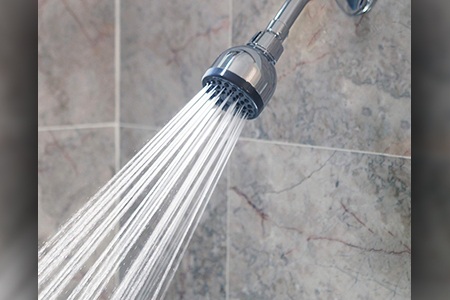
Pros
- A good choice for high-rise apartments where water pressure is lower on top floors
- Good shower power for refreshment
Cons
- Poor water efficiency
- Not good for areas with limited water resources
The high-pressure types of shower heads are the opposite of a low-pressure model. These shower heads give you a powerful burst of water for the most refreshing shower experience. Typically, they're suitable for use in areas that don't have water problems.
They're also ideal for use in high-rise apartment buildings. For instance, a 40-story apartment building in New York will offer a very different shower experience for people living on the top and bottom floors. Older buildings will have significantly lower water pressure at the top.
The high-pressure shower head turns your trickle shower into a powerful blast, compensating for the pipe's weaker water pressure. However, these models will likely increase your water bill, so it's a trade-off between shower experience, water costs, and environmental impact.
Rain Shower Heads
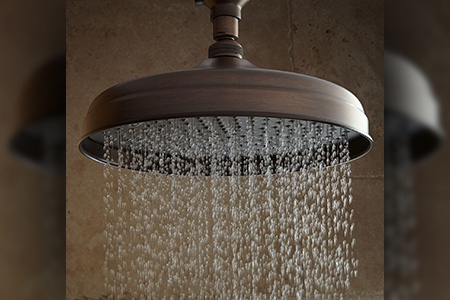
Pros
- Natural shower experience of falling rain
- Several mounting choices
Cons
- Low water efficiency
- Usually, one setting only
The rain shower head is one of the more popular modern models. These shower heads have a broad coverage area, with the head having anything up to a 20-inch diameter or larger.
There are dozens of jets in the shower, covering a wide area. They release a steady stream of water that feels like you're standing out in a powerful thunderstorm. They're nice for heated outdoor showers, too, where you're scrubbing while all that water just constantly rinses
They have a design to imitate standing in the rain or under a waterfall, providing a refreshing shower experience. However, since they have a broad coverage area, they're less water efficient and not suitable for use in areas with water restrictions.
Some models fit wall-mount designs, but many are broader and wider than the shower arm, requiring you to purchase an extension for the shower arm to configure them in the center of the shower. They are ideal for fitting a ceiling-mount design.
Handheld Shower Heads
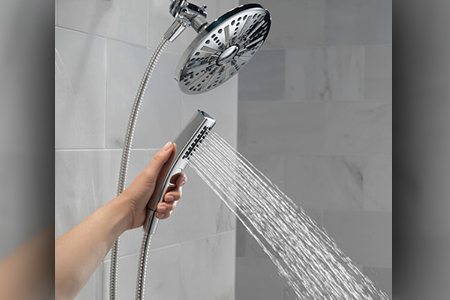
Pros
- Good for shoring in baths
- Several settings
- Good for washing pets
- Easy installation
- Mounted or handheld design
Cons
- Usually a low-power option
The handheld shower head design is common for a bathtub shower setup. They have a flexible metal hose connecting to the faucet in the bathtub. You press a button on the tap to redirect the water flow from the bath to the shower head. They tend to come with many shower head configurations too, in terms of water spray patterns.
Most models come with a mount attaching to the wall, allowing you to clip in the shower head and remove it for handheld use. This model lets you convert the bathtub to a shower if your apartment bathroom doesn't have space to accommodate one. Hang a shower curtain around the bath, and you're good to go.
A handheld model is also great for washing your hair in the bath. You don't have to dunk your head under the water. You wash away the shampoo with the handheld shower head. They're also a good choice for cleaning your pets in the tub. And then you can learn how to clean the shower head without vinegar or other stinky chemicals here.
Camper/RV Shower Heads
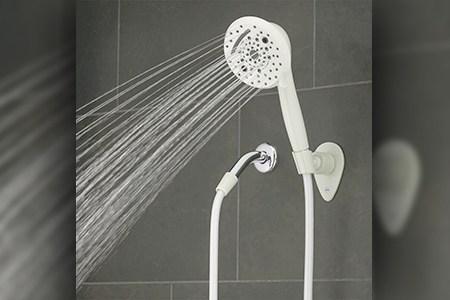
Pros
- Compact design
- Water efficient
- Good for conserving water
Cons
- Doesn't fit residential plumbing
These shower heads fit RVs and camper shower rooms. They typically offer a hybrid of the low-pressure and handheld model. You can detach the shower head from the wall mounting and have a wash in a tight space.
The low-flow design allows you to conserve water, while the handheld mount gives you efficient and effective coverage in a tight shower closet. Since RVs don't have large water tanks, these shower heads are ideal for conserving water while allowing you to shower on the road.
Different Types of Shower Heads for Varying Preferences
Choose the right types of shower heads for your needs and applications. Call a professional for advice if you need help with choosing the right shower head to suit your plumbing and with installation, though installing these are quite simple. Just remember to use some teflon tape around the threads to keep any leaking from occurring.



